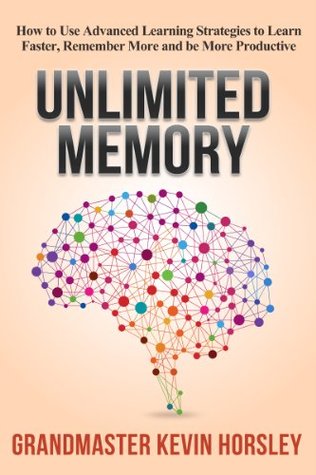Why: I thought memory was not under my control.
Goal: adopt one memorizing technique to help me with business idea pitching.
Table of Contents
Action: Bring Information to Life.
3 Key Concepts
- You need to genuinely care to concentrate and then remember.
- Be unrealistic; outrageous thoughts stick! Boring does not.
- Connect how will this new information benefit my personal goal.
Summary
This book addresses one single human ability that matters: to remember. No amount of learned information is useful if you forget it. You and I know how many theorems are left in our brains after a year of graduation.
Kevin teaches us how to approach memorizing systematically. Here are practices we all can do to master our minds. Spoiler alert: they are simple but ain’t easy.
4Cs to remember names (and anything else).
- Concentrate: ask until you hear the name. Not sure? Ask them to spell it out. Be interested!
- Create images: use the “SEE it” method. (discussed below)
- Connect: with their face, the location you met, comparison with known individuals like actors.
- Continue: actively review by asking yourself their names, create a named folder, networking.
Concentrate
Eliminate conflict and create peace by
- Control your inner voice: catch yourself deviating from the topic.
- Stop multitasking: “Try to catch 2 monkeys at once; you’ll lose both.”
- Know what you want: with P.I.C. Purpose, Interest, Curiosity.
- Eliminate worries: change from asking only “What if…” to “What would I do if…” Action-focused.
Know what you want with P.I.C.
- Purpose: be specific about “Why” you want to memorize it.
- Interest: find “What” in this information that will benefit your personal goal.
- Curiosity: ask “How” will this information help you achieve that goal.
Create Images
Make sure that you SEE it!
- Sense it: ways to your brain are sight, sound, smell, touch, and taste.
- Exaggerate it: draw an outlandish image of it. Boring doesn’t stick!
- Energize it: give mental images motion. Text → Image → Slideshow → Movie → (V.R.)?
Connect them
Organize your memory; the key is to connect them with existing memories.
In this book, there are many methods to memorize information like a car method, a room method, a body part method, pegs, etc. For example, below is a rhyming pegs method.
I will practice this one.
You too?
Good!
One = Bun
Two = Shoe
Three = Tree
Four = Door
Five = Hive
Six = Sticks
Seven = Heaven
Eight = Gate
Nine = Vine
To-do: guide new information with the above objects, and make it a vivid SEE story.
Continue
Go on and practice it.
So let’s say we get so good at memorizing with strategies and tactics above. Here is how to practice a memorable pitch for your audiences.
Deliver it on the F.L.O.O.R.
- First things
- Last things
- Outstanding images
- Own links
- Repeated information
Start first and end last sections with outstanding stories. Link them through out the pitch by repeating vivid ideas.
To sum up, Kevin urges you to change your belief that your memory is limited. It is not. It is about collecting them in a systematic and lively way.
The bad news is you must be disciplined to practice them; that is difficult.
The good news is – our mind rewards and invites more information.
He said your mind is the only computer in the world with this characteristic:
The more you put into it,
the more it will hold.

Goal check: I gladly adopt the SEE it method to memorize information and FLOOR it to the end!
Wasu’s Review
( 5.0 / 5.0 )
Get this book on Amazon here!
Bonus: I give you two of my favorite quotes about people’s names and self-disciplined.
Remember that a person’s name is to that person the sweetest and most important sound in any language.
Dale Carnegie
Self-discipline is the ability to make yourself do what you should do, when you should do it, whether you feel like it or not.
Elbert Hubbard

